Reimbursement dictates more than the average IR’s paycheck: reimbursement rates determine access to care, available procedures and patient expense. It’s part of the tricky economics of healthcare, and there is nothing as crucial to reimbursement as the management of CPT codes.
One of SIR’s key member benefits is the work that staff and volunteers undertake in both suggesting new CPT codes and helping to value approved codes. It’s an arduous process, but one that relies on the volunteer work of committed SIR members. Over the last 14 years, SIR has led 289 codes through this process to allow reimbursement for procedures performed by interventional radiologists.
Creating a code
The Current Procedural Terminology, or CPT codes, are overseen by the American Medical Association and created in conjunction with qualified healthcare professionals or associations. These codes describe healthcare services and procedures and are used by Medicare, Medicaid and private insurers to determine reimbursement rates.
CPT code creation or adjustments begin with a healthcare professional or association—such as SIR—suggesting a new code or amendment. These code change applications include a description of the procedure being done, details on the typical patient who would receive the procedure and any published supporting literature. The code will then be reviewed by the AMA CPT Editorial Panel. From there, it will either be approved, revised or rejected.
“There is so much detail required,” said Raj Ayyagari, MD, of the Boston Medical Center. Dr. Ayyagari spent several months in 2023 creating a code based on an emerging MRI-guided procedure.
This code has not yet finished the long process of being created, valued and accepted. Due to the confidential nature of the CPT creation process, details regarding the procedure or discussions surrounding the code creation are limited.
Dr. Ayyagari was asked to provide clinical expertise to the SIR CPT Editorial Panel and RUC workgroup due to his experience with the procedure, which not many IRs perform yet.
“Physician input, more importantly subspecialty physician input, into code construction is critical,” said Timothy L. Swan, MD, FSIR, a member of the CPT Editorial Panel. “I know several nonphysician coding experts who could write code change proposals, but none have the clinical insight into the physician work being described in the proposal that a subspecialty physician has.”
During his time working with the SIR workgroup, Dr. Ayyagari helped develop descriptions of the proposed codes, reviewed drafts and ensured that everyone involved understood the steps, process and reality of utilizing this procedure in practice.
During code creation, it’s not uncommon for SIR to work with other specialties or associations who have an interest in the procedure in question. In the case of the code that Dr. Ayyagari worked on, the procedure in question has overlap between IR and other specialties; as a result, Dr. Ayyagari worked on multiple versions of coding for the same procedure, depending on which physician specialty was performing the procedure.
The code that Dr. Ayyagari worked on was accepted by the CPT and then moved on to the AMA/Specialty Society Relative Value Scale Update Committee (RUC) to make recommendations to CMS on the physician work relative value units (RVUs) and direct practice expense inputs for this code. Dr. Ayyagari continued to work as a clinical expert during the RUC part of the process.
“It was very interesting to see how everything works behind the curtain, and it made me realize that all specialties are dealing with reimbursement struggles,” Dr. Ayyagari said.
Valuing a code
If a Category I code is approved by the AMA, it then goes to the RUC for valuation—and this is where the wider SIR community plays a key role.
The first step is a survey of SIR members. This anonymous survey is sent out via the specialty societies to providers to determine the time, intensity and work required to perform the procedure. This feedback is collated by SIR’s RUC Workgroup who then present their proposed code value to the RUC panel.
The RUC process is complicated, in-depth and, according to Dr. Ayyagari, very detail oriented. While working to determine code value, Dr. Ayyagari said he was surprised by the level of detail required and how granular the discussions became.
Once the RUC panel, which is composed of multi-specialty physician volunteers agree upon a relative value, that recommendation goes to the Center for Medicare and Medicaid Services (CMS) for final decision. At this point, CMS determines if they will accept the RUC recommendations, or if they will value codes differently.
Each year, CMS releases the Physician Fee Schedule (PFS)—first as a proposed rule, then as a final rule. The PFS dictates the reimbursement value for all codes and medical procedures and has increasingly involved substantial cuts to IR reimbursement. This is where SIR’s Health Policy and Economics team springs into action again—writing comment letters, providing literature and joining coalitions to argue against the cuts.
“Unfortunately, the pool of money given to the CMS for physician reimbursement is a Congressionally mandated, fixed, annual amount that has no inflationary factors built into the funding mechanism,” said Dr. Swan. “That means this dedicated PFS is fixed.”
As a result, the money allotted does not grow to accommodate any new CPT code independently valued by the RUC, Dr. Swan said. Nor does the PFS increase to cover increased utilization of Medicare coverage.
In addition, when new CPT codes are created or modified, the RUC almost always requires revaluation of related codes, Dr. Swan said. This revaluation ensures that codes within the same family maintain their relative value. In addition, the RUC flags services that are new or include new technology to determine if a resurvey and revaluation is necessary after 3 years of utilization data.
“Because IR is one of the most innovative specialties for service development, we need to be very strategic about when and how to advance new code change proposals to assure that its creation doesn’t harm reimbursement for the specialty as a whole,” Dr. Swan said.
The SIR member value
For over 30 years, SIR has had a presence in the RUC and CPT process. Currently, there are three SIR members serving in leadership roles in the space: Dr. Swan serves alongside Daniel Picus, MD, FSIR, on the CPT Editorial Panel Executive Committee, and Ezequiel Silva III, MD, FSIR, serves as the RUC chair.
This is not only a testament to the value that IR brings to the process, but the impact that IR has had in shaping interventional medicine over the years as well.
“Think about how much IR has changed medicine over 30 years. Our ability to contribute to that evolution at both the CPT and RUC level has truly been beneficial to medicine as a whole,” said Dr. Silva.
Dr. Silva first became involved in CPT creation in the mid-2000s when he helped create a code for placing a fiducial marker in the chest. Dr. Silva has since gone on to be appointed as the RUC Chair twice and gave the 2024 Charles T. Dotter Lecture on IR and public policy advocacy.
“For example, think about even the most basic interventional procedures such as percutaneous image guided biopsies, or think about even more complex work like a vascular stent or a TIPS procedure,” Dr. Silva said. “As interventional radiologists, we have to create codes and make sure they're valued appropriately so those services can be provided, and for those services to grow in their clinical utility.”
These codes have become the backbone of member reimbursement, enabling members to continue to offer new and impactful therapies to patients.
In addition, the volunteers who work in the economic sphere offer another key benefit to members.
“In my opinion, coding advice is probably one of the more important member-facing services the SIR Economics Committee provides,” said Dr. Swan. “Procedure coding needs to be precise to avoid fraud and abuse. It is essential that the descriptor of the code reported matches the service provided. Close isn’t good enough.”
How to get involved
However, even without an economic background, IRs are still able to play a key role in the CPT and valuation process.
The easiest way to be involved is to belong to a society like SIR.
When those initial surveys to determine the value of a code go out to determine the value of a particular procedure, they are sent only to SIR members—retired, nonpracticing or non-SIR members are not included in the outreach. Essentially, without membership to a society, a physician is unlikely to be involved in determining what they will be reimbursed.
Additional surveys then go out to determine experts and those interested in specific areas—and from this, members can be asked to serve as experts.
But for those who want to get in on the ground floor of the work, an economics degree or MBA isn’t necessary, Dr. Silva said. “What you do need, however, is a foundational interest and a willingness to learn on the job. So, the next step becomes, what's your on-ramp for this?”
Dr. Silva recommends becoming engaged with the SIR Economics Committee. Within that committee, there are four workgroups: the CPT Editorial Panel and RUC workgroup, the Coding Application and Guidance workgroup, the Carrier Advocacy workgroup, and the soon-to-come Alternative Payment Model workgroup.
“Be forthright and say that you want to engage in this because you find this interesting and you know you have a lot to learn. Show that you’re willing to learn,” Dr. Silva said.
Dr. Silva says he believes his involvement in the health policy space has not only provided a member benefit, but a patient benefit as well.
“Sometimes my patients ask me about the financial aspects of their care,” he said. “What does this therapy mean from a financial perspective? Can you help with my explanation of benefits?”
According to Dr. Silva, this is an opportunity to further engage and support his patients.
“They want to feel like we're in their corner, and we certainly and unquestionably are from the clinical perspective. But when you can go into their corner from an even deeper perspective that relates to their financial circumstances and ability to pay for their procedure, I think it strengthens that relationship.”
In addition, he says his positions within the AMA has allowed him to see potential shortcomings in practice and then bring them to the policy space to improve.
“I’ve actually been able to see those changes come back to benefit the patients I care for,” he said. “It’s a circumferential benefit that starts with patient care, goes up the chain to the policy level and then comes back to patient care. It's rewarding to see that benefit and to see patients gaining from that experience.”


